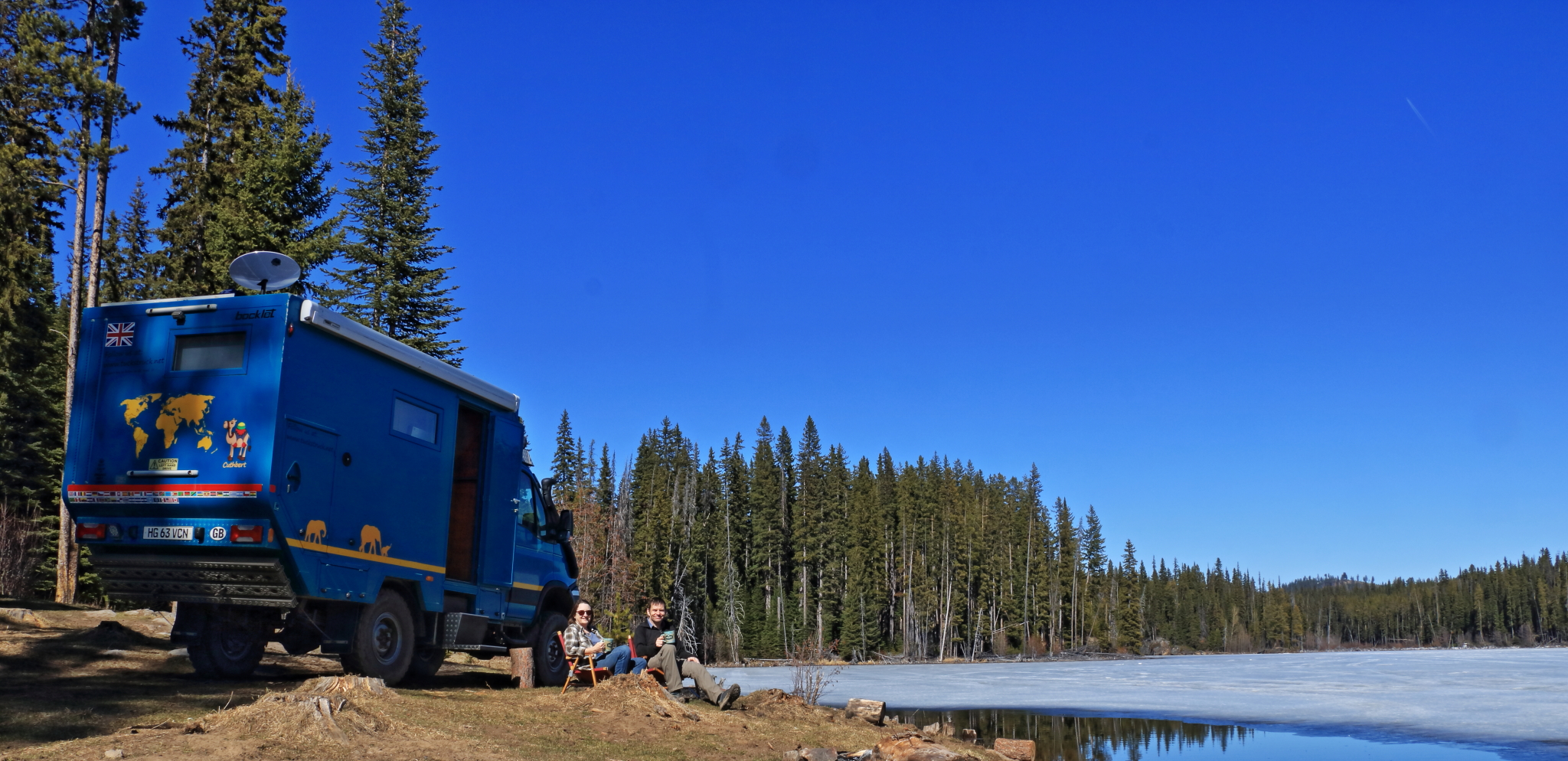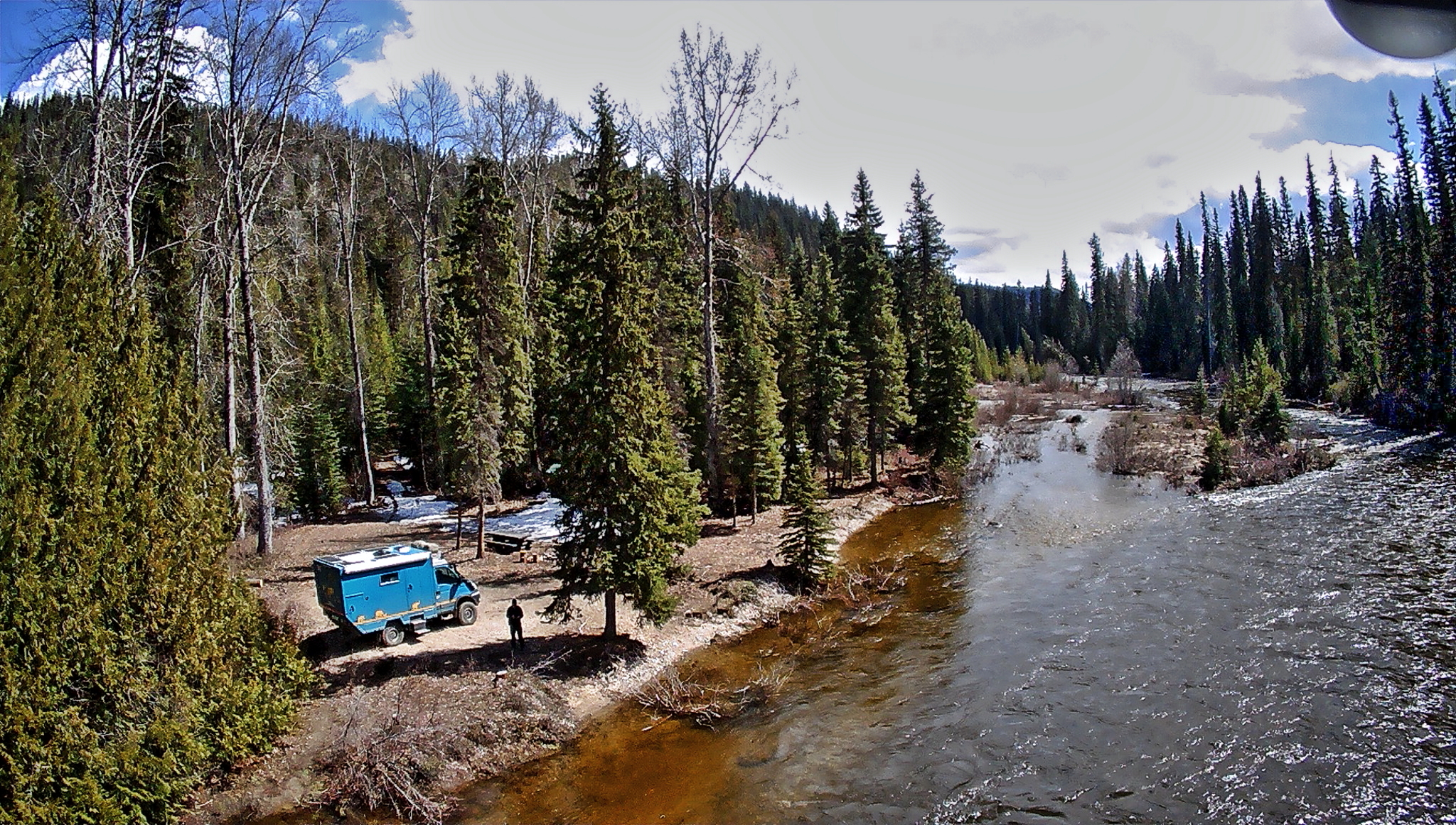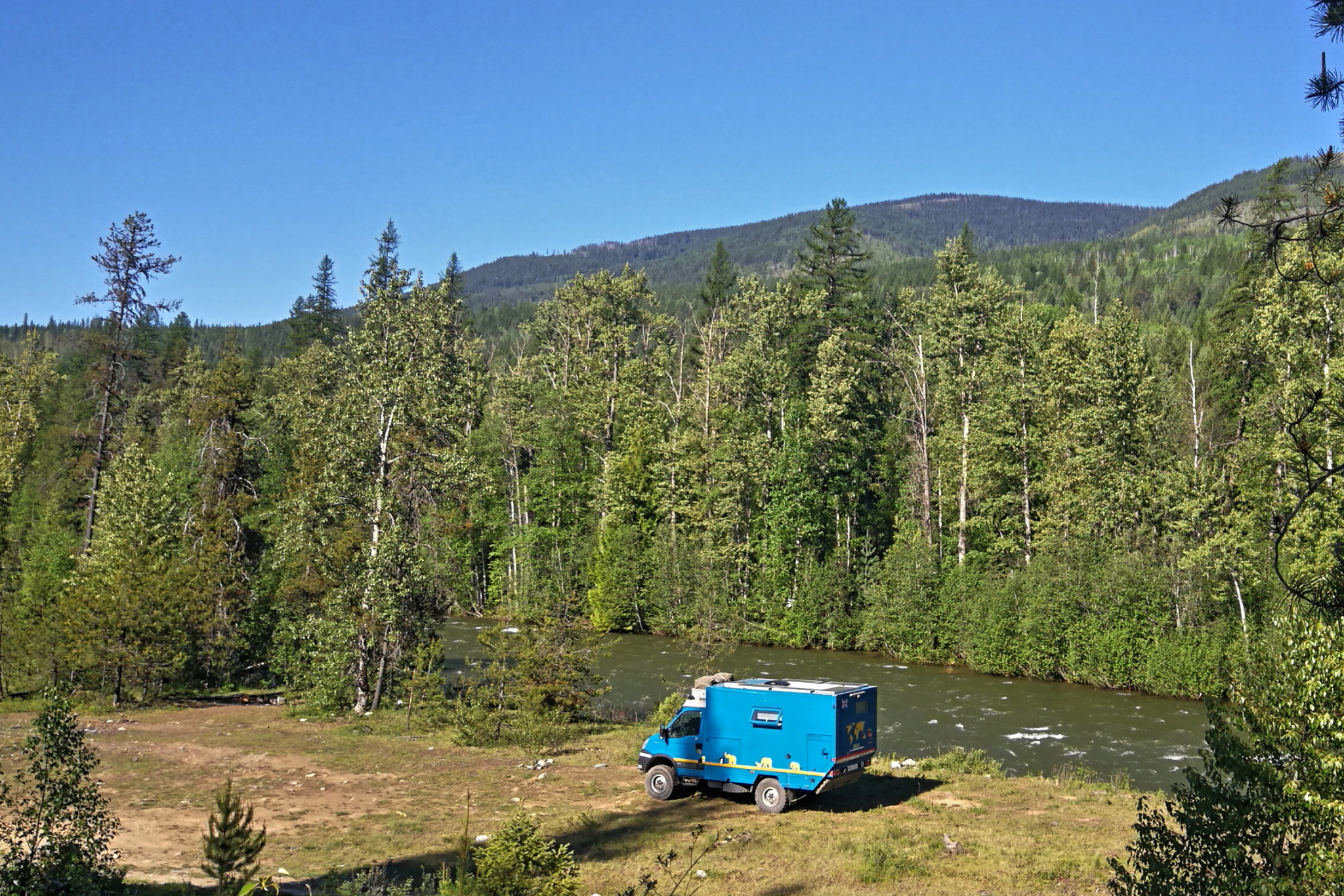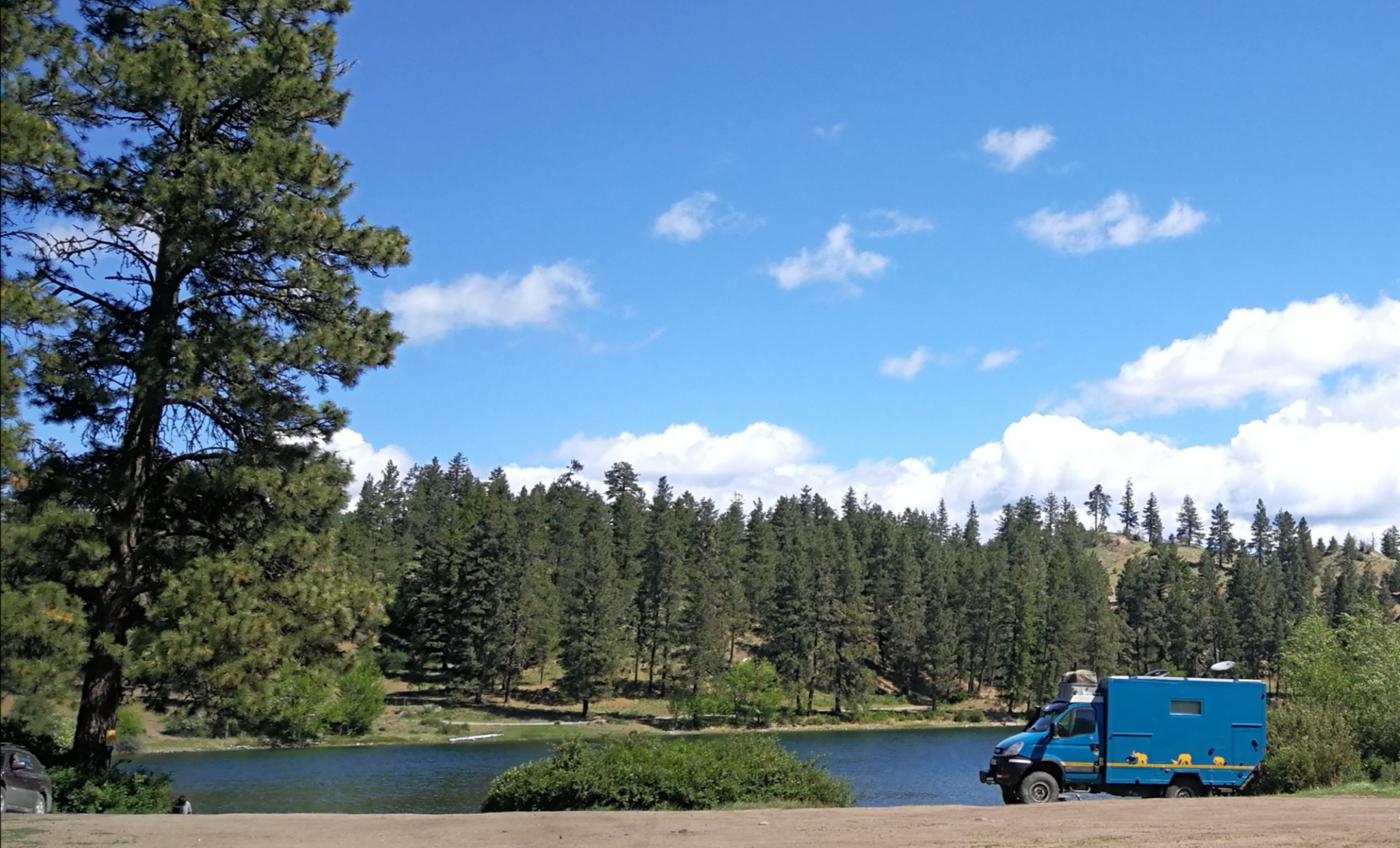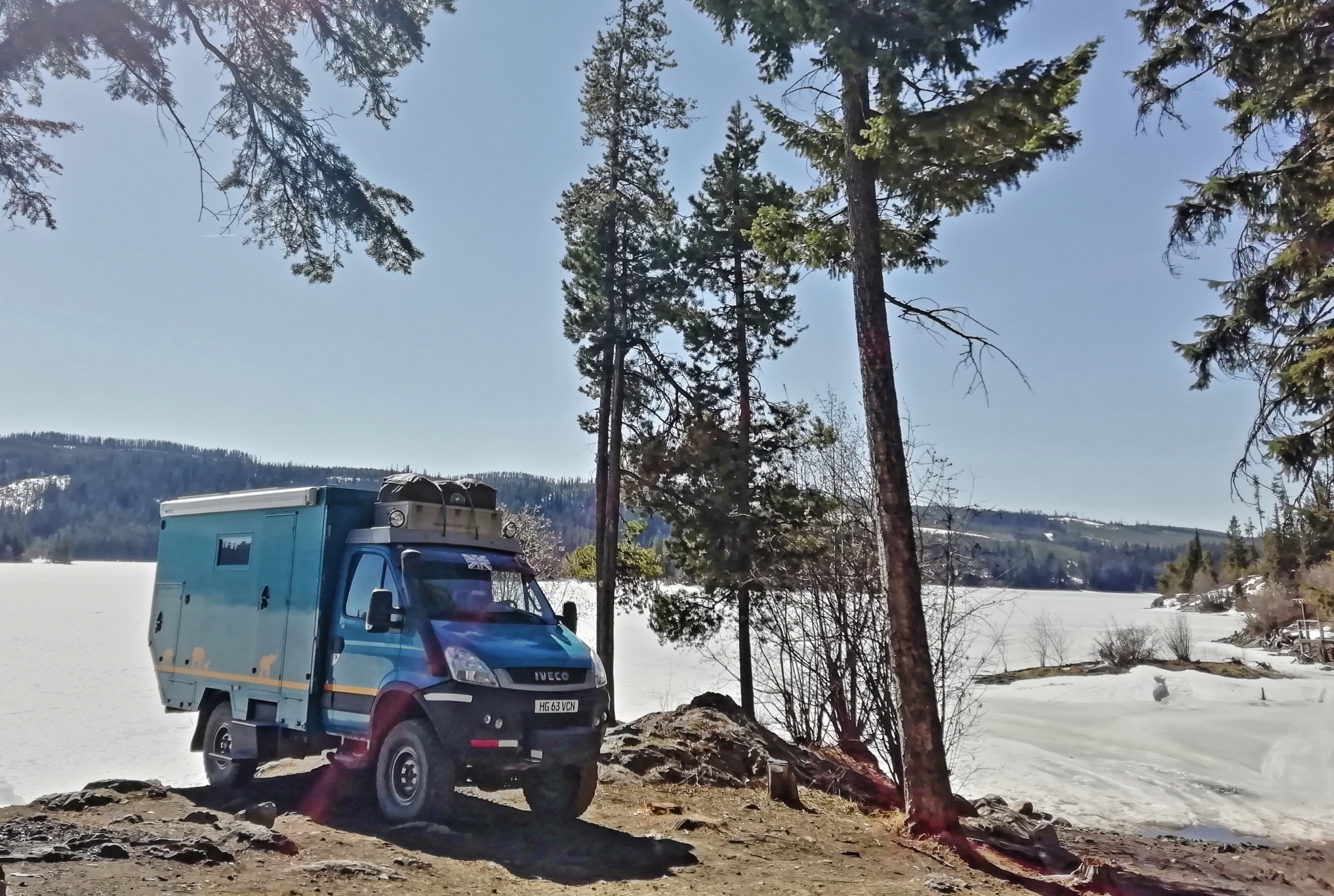Is there a more glorious place to be during a global pandemic than overlanding western Canada? Talk about social distancing… there’s more awesome open space to get away from people here than you can shake a shakey stick at. So here’s how our wilderness social distancing has allowed us to test the mobility of our Starlink system, and we also come clean with a couple of overlanding confessions…

Space in the Wild
British Columbian wilderness is vast, beautiful and empty. And that social distancing thing? Pah!! We actually have trouble finding anyone to keep socially distanced from! Actually, us overlanders were well ahead of the game on this stuff. We were hunting-out remote spots away from people years before the ‘rona virus brought this ‘social distancing’ malarkey into vogue 😉. Now in spring 2021, we’re still distancing, exploring forest dirt-trails and finding lakes in BC, Canada. Somehow, BC just seems to keep throwing evermore awesome wild-camping spots at us.
It’s true that Canada (like much of the world) has taken a few steps backwards with the ‘rona virus recovery this spring. The restrictions here in BC that slightly affected us are:
- no indoor dining. This rule arrived just in time for improvements in the weather, so on the few occasions that we’ve been in towns, outdoor patio dining has been a pleasure.
- movement restricted to within a health authority zone. This has been limiting for people in a small, densely populated zone like Vancouver. But we’re lucky to be in the heuuuge combined Interior/Northern Health zone, so we’ve been able to get out and about without any restrictions that concern us.
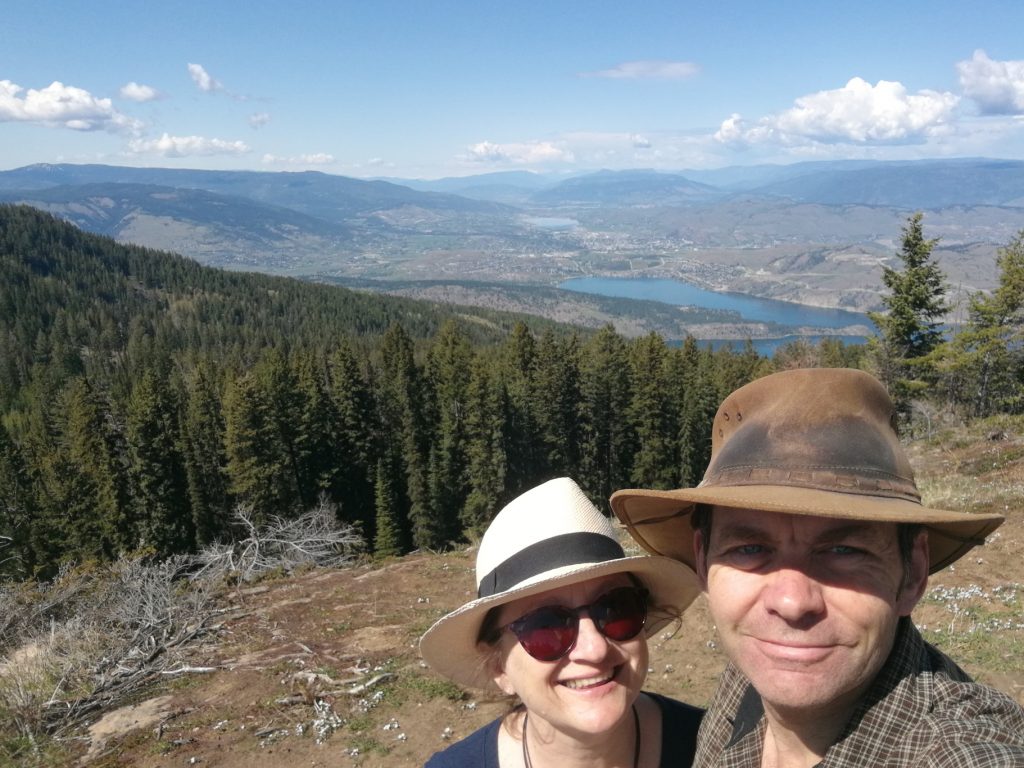
The good news is that things are ‘on the up’ in Canada again now. Vaccines are rolling out at a cracking pace and restrictions are being lifted in most provinces. Less good news is that there seems to be minimal inclination on the part of either Biden or Trudeau to open their mutual border. Not even the slightest hint of a draft discussion plan with a vague provisional schedule for a tentative, flexible date set in jelly ☹.
As we watch and wait, we can only guess that when it does eventually open, it could well be restricted to those who are fully vaccinated. Well, we’re now chuffed to announce that we each had our second jab this week! This a step in the right direction for us warding off the dreaded virus and staying healthy. Also, if the ‘fully vaxxed’ criteria is applied to enter the US, we should be good to go!
Mobile Starlink
Remember back a few weeks ago we told you about our new SpaceX Starlink dish (aka Dishy McFlatface – yes, that’s what SpaceX are officially calling it) for high-speed satellite internet in our truck? Well, we’ve been testing-out its mobility a bit more. SpaceX is not yet selling it as a mobile system for use away from its registered address, but we are managing to make good use of ours as we hop around BC from lake to lake.
By trial and error we have found that, depending on terrain and other obstruction (e.g. trees), Dishy will work within a cell area up to around 25-30km from his ‘registered address’. Okay, okay… we know travelling 30km from home isn’t within most people’s definition of ‘overlanding’ 😉. But we’ve learnt two important things that make this range not as limiting as you might think:
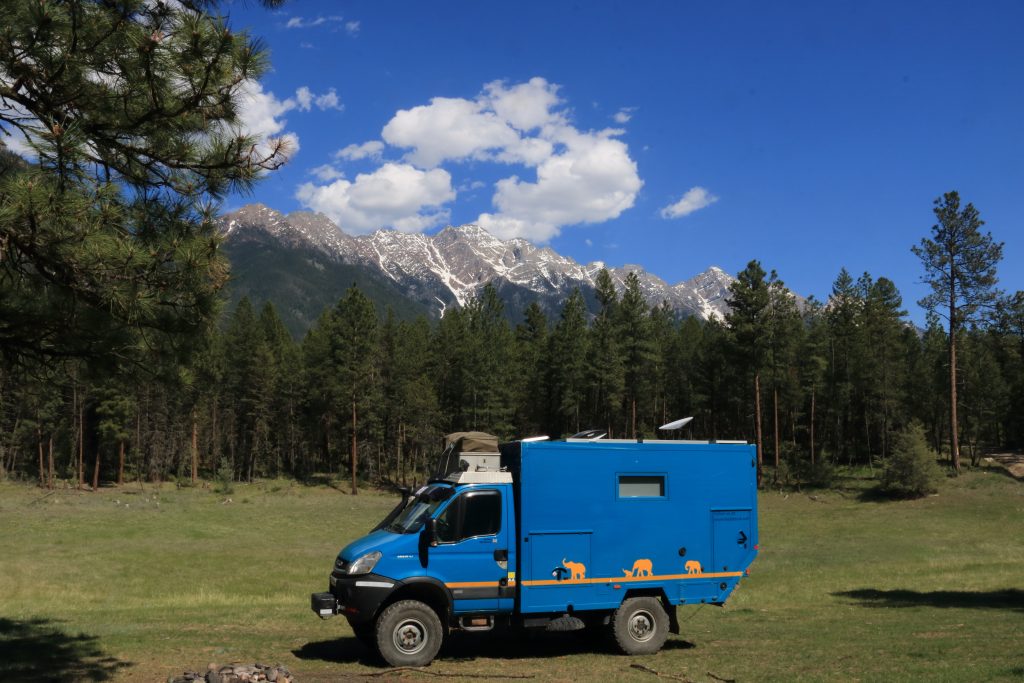
- it’s not necessary to actually live at (or have any kind of connection to) the ‘registered address’. It’s not even necessary for the registered address to be a dwelling of any kind. A registered address can be any random location you chose, provided it’s within a cell area covered by the Starlink network. We chose a public park as our initial registered address for our Dishy.
- it is quick and easy to change the registered address on the Starlink website. Once a new registered address is updated, it takes just a few minutes to take effect and Dishy starts working within the area of his new registered address.
We have been moving around, parking-up in various beauty spots, each time changing the registered address to a position near to our camp spot, so far without problem. With download speeds averaging around 220mbps, we are loving the system and finding it usable. The two limiting factors for overlanding use of the system at the moment we think are:
- there is no seamless mobility to transfer between cells as we move around (Elon has said that he is aiming to have the system fully mobile by the end of this year); and
- coverage is not global yet. There are limited locations/cells with satellite coverage where a registered address can be placed (this coverage is increasing steadily as SpaceX launches around 60 satellites per week!!)
It’s important to recognise that the system is still only sold on a beta-testing basis and full/flawless service is not guaranteed even for static use at a fixed address. So for us to be using it successfully on a mobile basis as we are, we think is pretty cool. Things can only get better. And in the meantime, we get to keep an eye on the world with internet in the wilderness 😀
Confession 1: Buying Crappy Kit
Now it’s confession time. As a general principle, we take pride in trying to equip our Cuthbert with the best gear we can find/afford for the job. When asked by other overlanders we always say it’s pointless (not to mention sometimes downright stupid and dangerous) to set off to the wilderness with cheap gear that’s likely to fail at a critical point where there’s no back-up help available. Now we have to confess that in this particular instance, we didn’t practice what we preach 😒
When we set out in April to explore the little-driven forest trails in BC, it was already sunny and warm. Most of the winter snow had melted away. But one day, our randomly chosen route took us down a narrow, shady forest trail which climbed to a bit higher altitude than we were expecting. It doesn’t take a science geek to work out that the higher you go, the colder it gets, ergo, the later in the season the snow melts (particularly on shady trails where the sun can’t reach).
The clue to the challenge facing us might have been that there were no vehicle tyre marks, only snow-mobile tracks down the trail ahead. But hey… our Cuthbert’s good at this stuff. What could possibly go wrong, eh??? The snow didn’t look too bad at first, but as we went along it got a bit ‘sporty’. The snow became quite deep in places and hard-packed icy in others. In some places Cuthbert’s 5,900kg mass was sliding around the narrow trail with deep ditches either side 😬; in other places we weren’t sliding around, in fact we weren’t going anywhere at all without a long winch-pull 🤣.



The solution to this kind of problem, as every good Canadian overlander knows, is wheel chains… proper wheel chains, i.e. wheel chains appropriate for the wheels/tyres to which they are to be chained. With these, the trail would’ve been easy-peasy-lemon-squeasy for Cuthbert. Instead, we have to confess to not following our own ‘take the best’ mantra and having only a cheap, crappy set of wheel cables. We had bought them back in the USA last year to be allowed down a route, but never used them. We were pretty sure they were essentially a pile of junk, but it turns out they weren’t even that good. They took a while to fit, then once we started rolling the cables just slid between the tread-blocks of Cuthbert’s Michelin XZLs. The grip got worse instead of better.
Results:
- 4 hrs to do around 4 km;
- some hair-raising moments of ice-skating with Cuthbert; and
- a teeny regret at having left Cuthbert’s proper, hard-core snow chains back in UK.
In our (partial) defence, we never thought when we left UK years ago for Latin America that we would need snow chains. Our crystal ball didn’t foresee that some random virus would force us to spend a winter in Canada. Nevertheless, we should still have bought the right kit for the job. So the moral of the story kids, is ‘do as I say, not as I do’.
Confession 2: An RV Park
Here we go with confession number two. A couple of weeks ago we did something that real overlanders almost never do. Something we have only ever done in the past on very rare occasions of desperation and something we usually avoid like the plague. Any guesses??? Well… we stayed in an RV park. Yes, a proper RV park-resort. And we did it on a holiday weekend when it was full of white monster-sized family motorhomes and trailers/caravans. Our long-time followers may recall that we have in the past been less than complimentary about these “dreadful, featureless, soulless places with their full-hook-up concrete park spots set rigidly row after row, each site little more than inches from the next”.
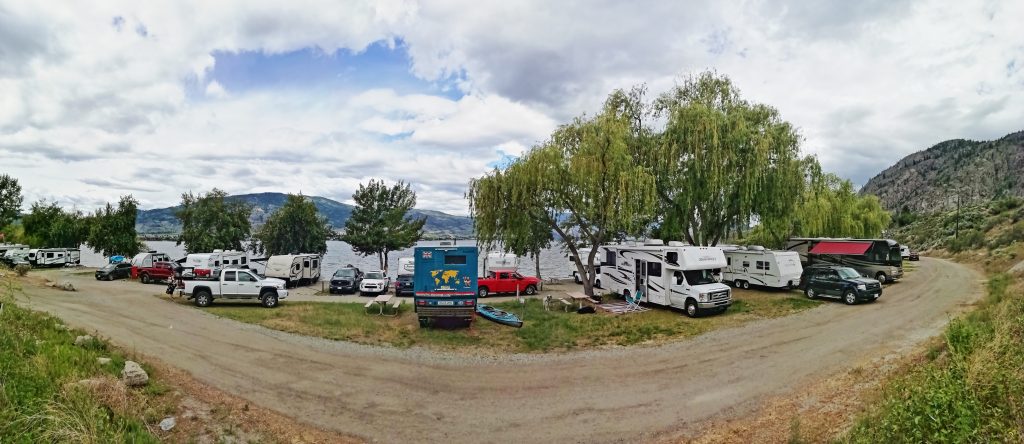
We did it because some friends we met over the winter skiing in Big White were having an RVers get-together and were kind enough to invite us along. They’re such lovely people and we’re so chuffed to be included us in their plans, we really didn’t want to miss it.
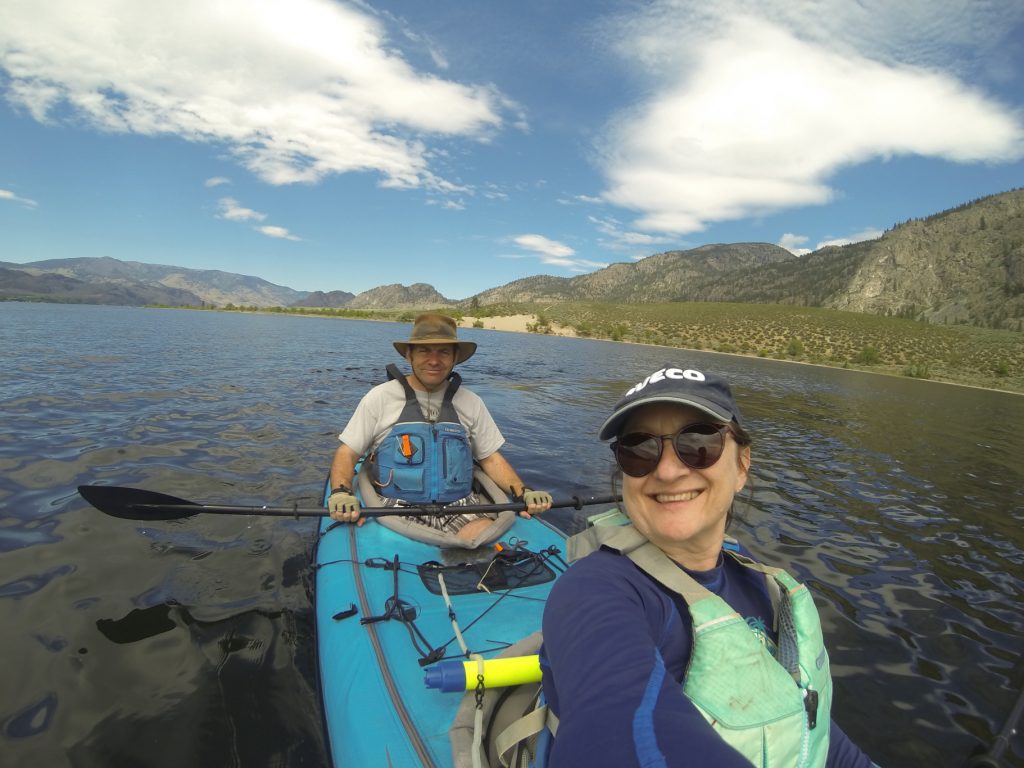
And you know what? We have been forced to eat our cruel and heartless words about RV parks!! They are really not all so bad! Okay, well… many of them are bad, but this particular one is in a glorious location on Osoyoos Lake in south Okanagan. We had camp-spots close to the water so we could throw our Boaty McBoatface kayak into the lake for some fun paddling. Each spot is grassy, fairly spacious and shady with lovely willow trees. None of the tightly-packed concrete hard-stands that poor-quality North American RV parks are famous for. Yes, Cuthbert did look a bit out of place amongst his fellow campers, but he never blends-in here anyway, so no change with that 😊.
We had a marvellous time, we drank and ate waaay too much, made more good friends and thoroughly enjoyed ourselves. Whenever we get to move on from Canada, we will always remember the great friendship, kindness and hospitality shown to us by the people here.

